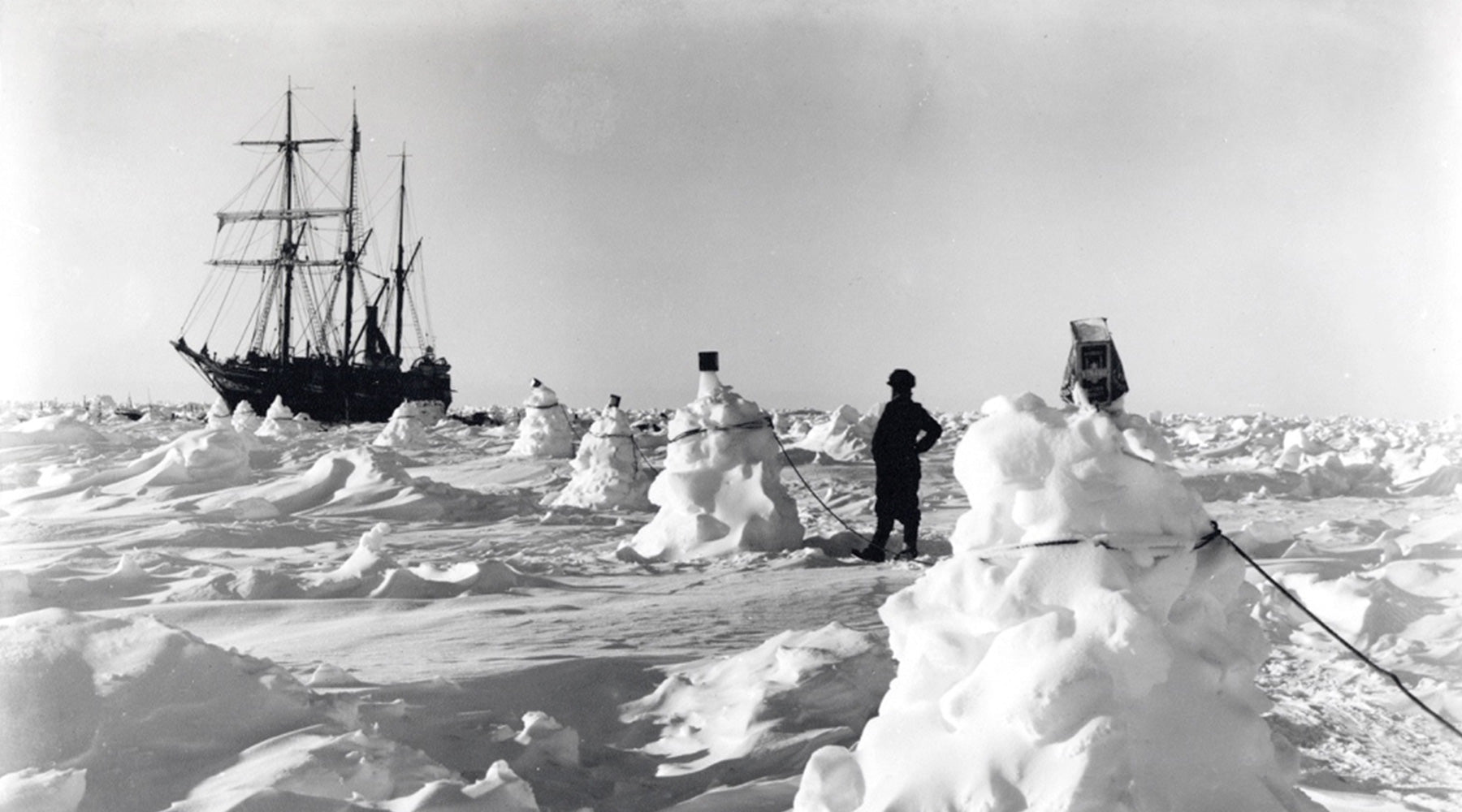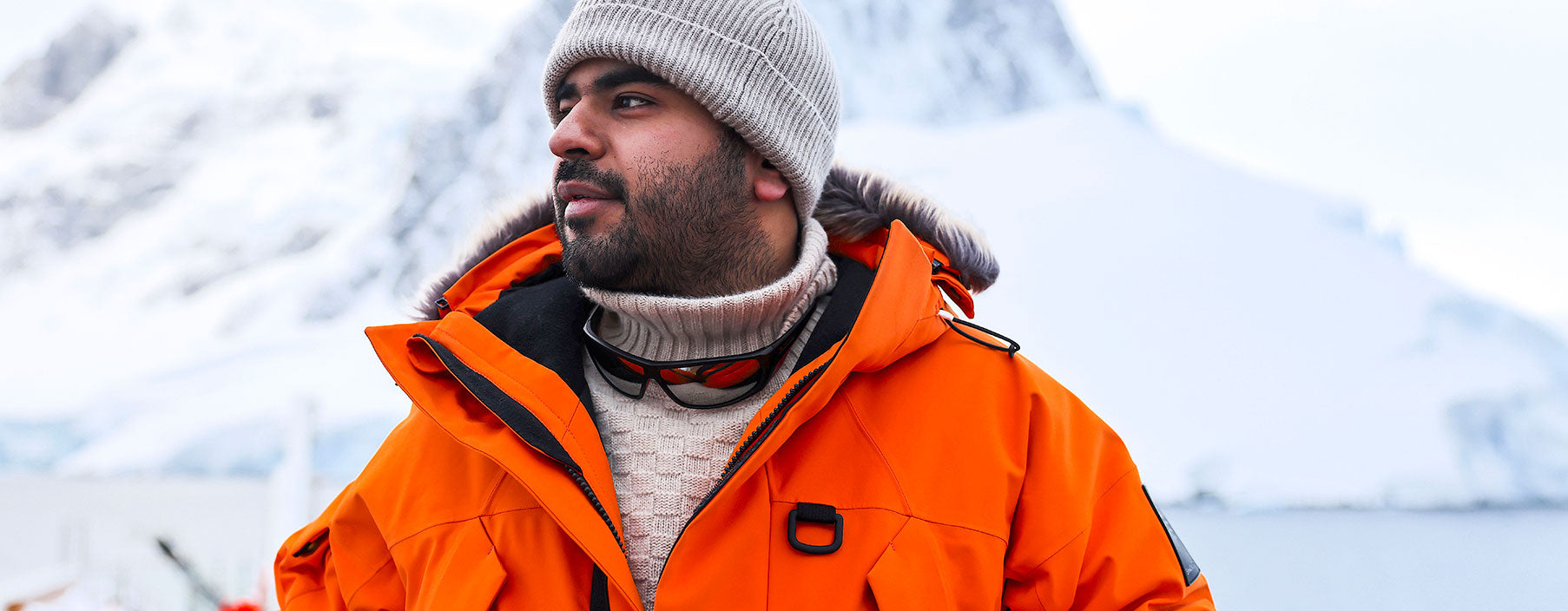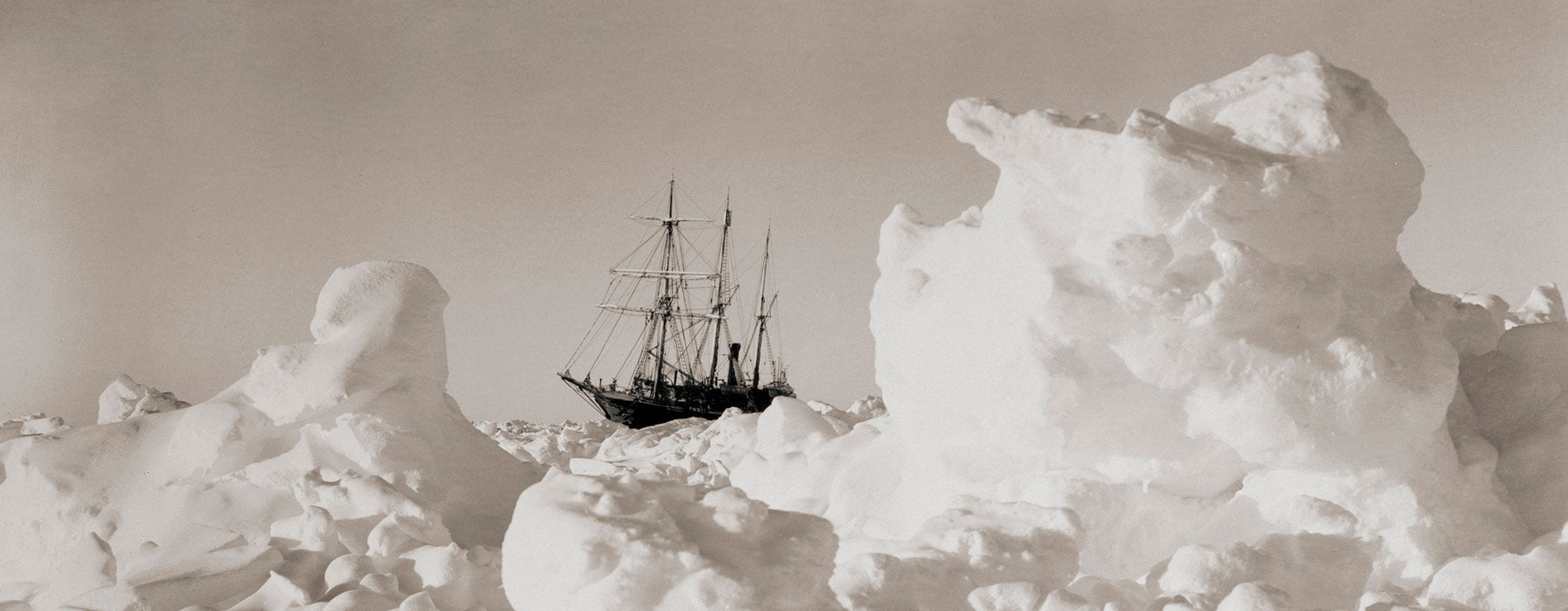
Frank Hurley, a pioneer of photography
Hurley was an adventurer and pioneering photographer who captured many memorable moments in 20th-century history and became one of the greatest photojournalists of the age. Written by Michael Smith.
Hurley, an Australian, was a celebrated figure whose films memorably recorded the remarkable events on Sir Ernest Shackleton’s 'Endurance' expedition to the Antarctic and risked his life taking frontline photographs in World War One and World War Two.
A blunt-speaking, no-nonsense character with a distinctive mop of thick curly hair, Hurley would go anywhere and do anything to capture the perfect image. To Hurley, the risk was always worth the picture.

James Francis Hurley, known as Frank, was born in the Glebe district of Sydney, Australia in October 1885. His father Edward was a typesetter and trade unionist who migrated from Lancashire and his mother Margaret came from a family of vintners in the Alsace Lorraine region.
His adventures began at 13, when he ran away from home to work as a steel fitter’s apprentice. He later studied engineering but also discovered photography and sacrificed a large chunk of his wages on a Kodak box camera, which he paid off at 1s (5p) a week. His first assignment was taking pictures for postcards. “I knew I had found my real work,” he remembered.
Life changed dramatically in 1910 after meeting Douglas Mawson, the Australian explorer who invited Hurley to film his 1911-14 Antarctic expedition. Two men died and Mawson barely survived a harrowing march alone and missed the ship home. It was Hurley’s film, Home of the Blizzard, which contained some of the earliest moving footage of Antarctica and turned Hurley into a celebrity. It also raised money to pay for a ship to rescue Mawson.

Hurley was filming in Queensland when Sir Ernest Shackleton sent a telegram inviting him to join the 'Endurance' expedition, which became exploration’s greatest story of survival. Despite the risks, Hurley leapt at the chance, particularly when he secured a lucrative deal to take a 25% share of the expedition’s film rights.
Hurley and Shackleton first met in Buenos Aires in October 1914 and soon found they both treated triumph and disaster in the same unruffled manner. “Shackleton was an explorer of the type who carried the Union Jack over uncharted seas and planted it in the heart of unknown lands for sheer adventure’s sake,” he wrote.
Shackleton quickly recruited Hurley to join the select band of six men tasked with the expedition’s main ambition – a dangerous 1,800 mile (2,800 km) coast-to-coast trek across the mostly unknown Antarctic continent.
However, the trek never materialised because 'Endurance' was crushed by the ice in the treacherous Weddell Sea in 1915, leaving 28 men marooned on a floating sheet of ice cut off from the civilised world.
Hurley was among Shackleton’s most reliable and versatile comrades as the party drifted on an ice-floe at the mercy of the currents. He was an accomplished dog driver and hunter and used his old engineering skills make a vital blubber stove from an oil drum. An ever-practical Hurley also ate the sledge dogs when food ran low and explained: “Hunger brings us all to the level of other species.”

But Hurley’s most memorable contribution was the catalogue of moving and still images, mostly taken on glass plates which are arguably the greatest pictures ever taken in Antarctica. Hurley defined early Antarctic exploration to the world.
The tools of Hurley’s trade were a mixture of the latest and the tried and tested equipment which had served so well. It is thought Hurley travelled to the ice with about seven cameras and at least two cine cameras, plus a mixture of lenses and colour and black-and-white film. Most vanished in the ice.
He experimented with early colour techniques, flash photography and broke convention by controversially creating photo montages like a painter. Someone said he was “pictorial artist”.
But the pictures were nearly lost when Endurance was crushed and only Hurley’s determination saved them for posterity. With Endurance gradually sinking beneath the ice, Hurley removed all his clothes and plunged naked into the icy waters to save his precious pictures before the ship disappeared beneath the ice.
To his dismay, Shackleton insisted the glass plates were too heavy to carry as the party struggled to drag their lifeboats to open seas. Hurley faced an appalling choice but calmly sat on the ice and painstakingly filtered the 600-plus plates, smashing over 400 deemed unfit to avoid having any second thoughts. The remaining 150 plates thus acquired a priceless status.

In partnership with the Royal Geographical Society Society (with The Institute of British Geographers), Shackleton has released a collection of these astonishing and rare photographs available to purchase in the form of hand-crafted, limited edition exhibition-grade platinum prints.


Hurley was left stranded on the desolate Elephant Island for over four months while Shackleton sailed to South Georgia in search of rescue which came in August 1916. A year later Hurley was filming Aussie troops in the trenches at Passchendaele where he captured many memorable images of mud, camaraderie and death. He even found time to marry lifelong partner, Antionette.
Hurley travelled the world in 1920s, capturing faces, landscapes and wildlife as he went. He returned to Antarctica with Mawson in 1929, filmed the building of the Sydney Harbour Bridge in the early 30s and asked to make a film celebrating the 150th anniversary of the founding of Australia. Overall, he made well over 50 films and was awarded the OBE in 1941.
War beckoned again in the 1940s when Hurley, now in his mid-50s, travelled to the front with Australian forces at El Alamein and elsewhere in North Africa and the Middle East.
Frank Hurley was born before human’s first flew and lived to see the first men in space. During the time he recorded history in the making and died on January 16, January 1962. The day before, the 76-years old Hurley was on assignment, taking photographs.
Michael Smith is an author-journalist and authority on the history of polar exploration. www.micksmith.co.uk



